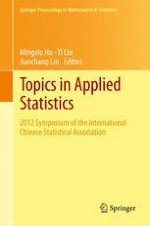2013 | OriginalPaper | Buchkapitel
Kernel Methods for Regression Analysis of Microbiome Compositional Data
verfasst von : Jun Chen, Hongzhe Li
Erschienen in: Topics in Applied Statistics
Verlag: Springer New York
Aktivieren Sie unsere intelligente Suche, um passende Fachinhalte oder Patente zu finden.
Wählen Sie Textabschnitte aus um mit Künstlicher Intelligenz passenden Patente zu finden. powered by
Markieren Sie Textabschnitte, um KI-gestützt weitere passende Inhalte zu finden. powered by
